Scientific name Trillium sessile Rank Species | Genus Trillium Higher classification Tri flower | |
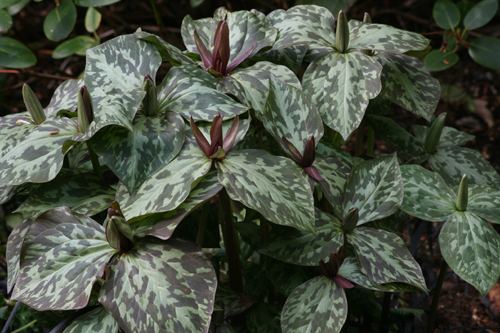 | ||
Similar Tri flower, Trillium luteum, Trillium erectum, Trillium recurvatum, Trillium grandiflorum | ||
Trillium sessile, the toadshade or sessile-flowered wake-robin, is a perennial spring wildflower native to the central part of the eastern United States and the Ozarks. It is a small trillium (rarely over 9 cm tall). Toadshade can be distinguished from other trilliums by its single foul smelling, stalkless, flower nestled in the middle of its three leaves. The three maroon petals, maintain a "closed" posture throughout its presence, the petals are occasionally pale green. The leaves are sometimes, but not always mottled with shades of light and dark green. Its species name comes from the Latin word sessilis which means low sitting, and refers to its stalkless flower.
Contents
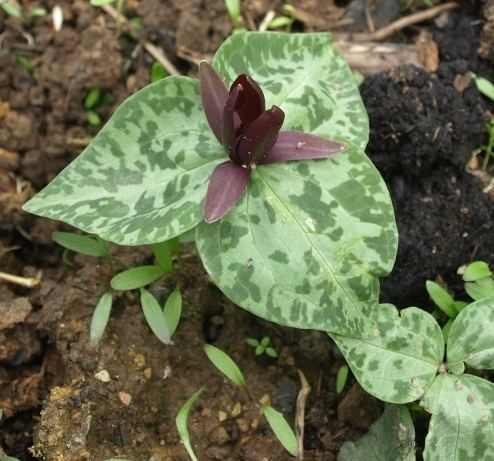
Ecology
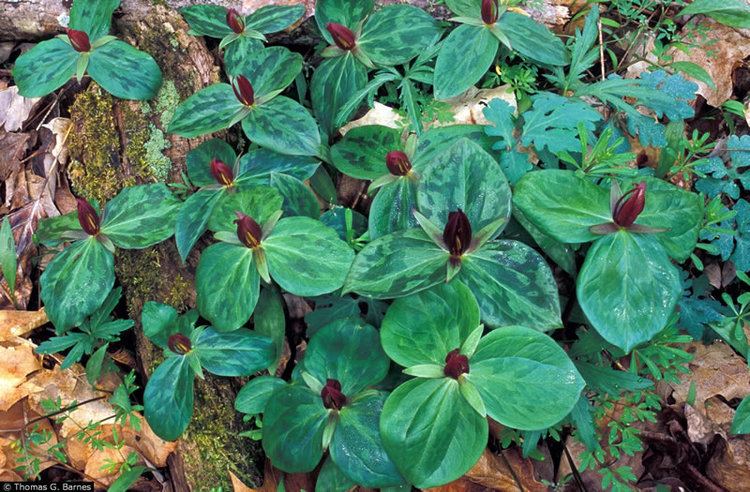
Trillium sessile is most common in rich moist woods but also can be found in rich forests, limestone woods, flood plains, along fence rows. It is persistent under light pasturing. The foul smelling flowers attract its primary pollinators, flies and beetles. The flowers are present from April–June. This plant is clump forming from a thick rhizome. The above ground parts of the plant die back by mid-summer, but may persist longer in areas that do not completely dry out.

Toadshade is listed as state threatened in Michigan and state endangered in New York; both states are on the northern edge of its range.
Classification
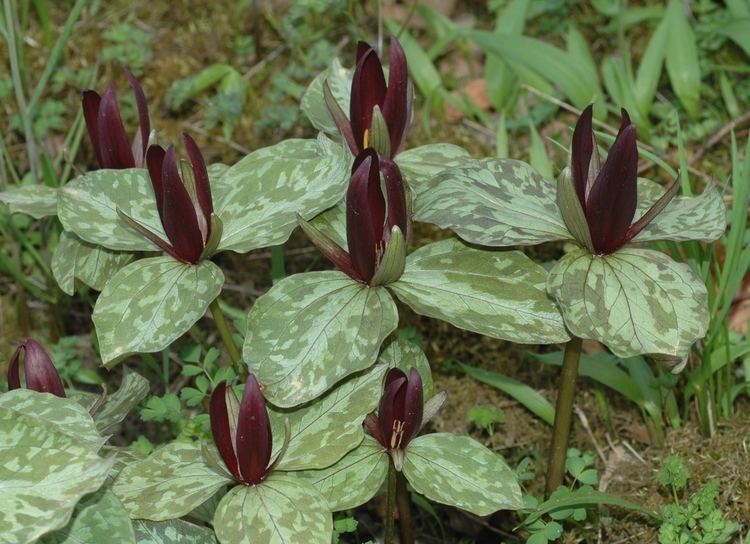
Uncommon, green flowered forms of this plant are sometimes classified as Trillium sessile forma viridiflorum (Beyer). The term Trillium sessile var. luteum used by some nurseries may cause confusion, since this is an older synonym for Trillium luteum, not of T. sessile.
Uses
Although some accounts indicate that the cooked greens of this plant may be edible as an emergency food, the entire plant, and especially the root, is known to induce vomiting. The fruit is considered a suspected poison. This plant has been used medicinally to treat tumors. T. sessile is sometimes cited as having been used as a poultice for boils and as a panacea-like decoction, but this is doubtful as it is attributed to Native American tribes (the Yuki and Wailaki) of California, where this plant is not known to occur.
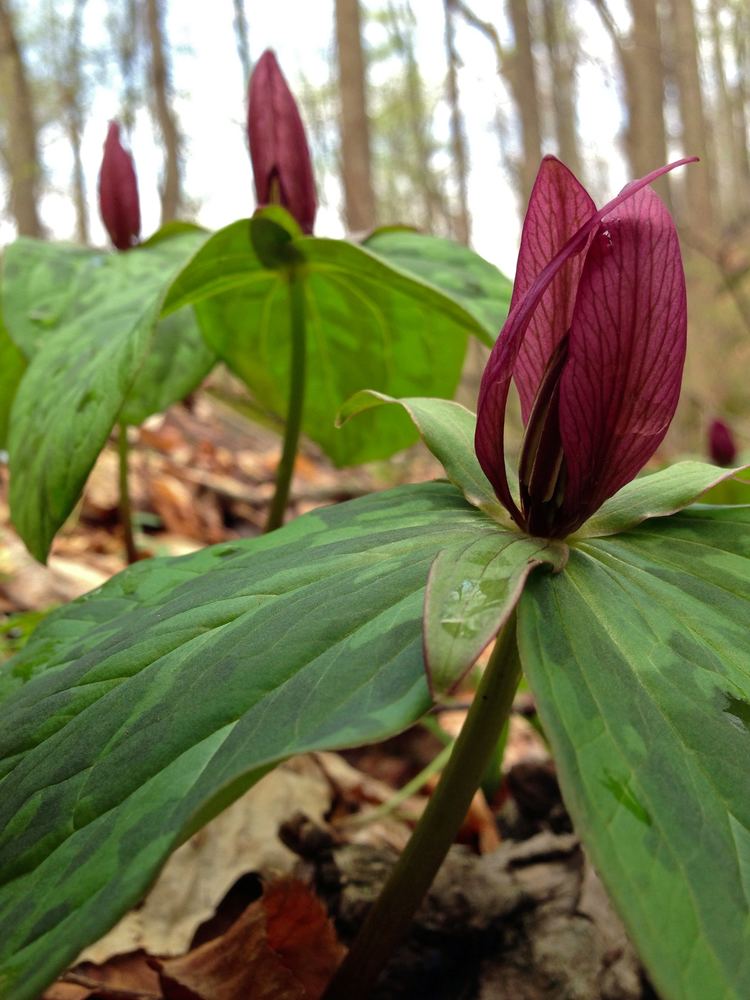
This plant is sometimes used in woodland wildflower gardens. Like many trilliums, T. sessile often does not transplant successfully from the wild.
